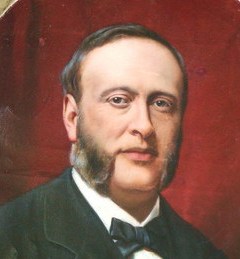
Maurice Raynaud
Maurice Raynaud: Pioneer in Vascular Medicine and the Legacy of Raynaud’s Disease
Maurice Raynaud (1834–1881) was a French physician whose work laid foundational knowledge in vascular medicine, particularly with Raynaud’s disease, a condition marked by the constriction of blood vessels leading to diminished blood flow in specific areas of the body, typically the fingers and toes. His contributions continue to impact medical research and patient care, earning him a respected place in medical history.
Early Life and Education
Born on April 10, 1834, in Barèges, France, Maurice Raynaud demonstrated a keen interest in medicine from an early age. He attended the prestigious University of Paris, where he quickly stood out for his academic excellence and dedication to the medical sciences. His talent and determination led him to become a professor of medicine at the university, a role in which he influenced countless students and furthered his research interests.
The Birth of a Landmark Discovery
In 1862, Raynaud presented his doctoral thesis, which would later form the basis of his most famous work. This thesis focused on episodic digital ischemia, a condition in which blood vessels in the extremities experience periodic constriction, leading to a lack of blood supply. Through his detailed observations, Raynaud identified a phenomenon that would later become known as Raynaud’s disease. He meticulously documented the phases of the condition, including pallor (whitening of the skin due to reduced blood flow), cyanosis (a bluish tint indicating oxygen deprivation), and hyperemia (redness as blood flow returns). This structured analysis established a clear pattern of vasospastic episodes that laid the groundwork for understanding similar vascular disorders.
Contributions to Vascular Medicine
Raynaud’s documentation of this condition was revolutionary for its time. Despite the clarity and depth of his findings, his contemporaries initially met his work with skepticism. It took years for the medical community to fully recognize and validate his observations, and the term “Raynaud’s disease” gradually became recognized as more research supported his findings.
Raynaud’s contributions extended beyond his research on his eponymous disease. As a professor and researcher, he emphasized a rigorous approach to clinical study and observation, encouraging future generations of physicians to follow suit. His methods highlighted the importance of structured observation and patient history in diagnosing and understanding vascular and other complex disorders.
Legacy and Lasting Impact
Maurice Raynaud’s career was relatively brief; he passed away at the age of 47 on June 29, 1881. Although he did not live to witness the full extent of his work’s influence, his name became immortalized through Raynaud’s disease, a condition still widely studied and treated by medical professionals globally. His insights into the symptoms and progression of vascular constriction serve as a foundation for modern research into vascular diseases and autoimmunity-related circulatory conditions.
Today, Raynaud’s work continues to inspire researchers and clinicians in vascular medicine. The understanding and treatment of Raynaud’s disease have advanced significantly, but his initial observations and structured clinical approach remain as relevant as ever. His dedication to patient care and medical education reminds us of the enduring impact one individual can have on a field, even over a century after their work began.
Conclusion
Maurice Raynaud’s life and career exemplify the power of curiosity and meticulous observation in medical science. His legacy lives on in the continued research into Raynaud’s disease and other vascular disorders, underscoring his lasting contributions to medicine. His work, though initially met with resistance, now stands as a testament to the value of perseverance and dedication in advancing medical knowledge.
